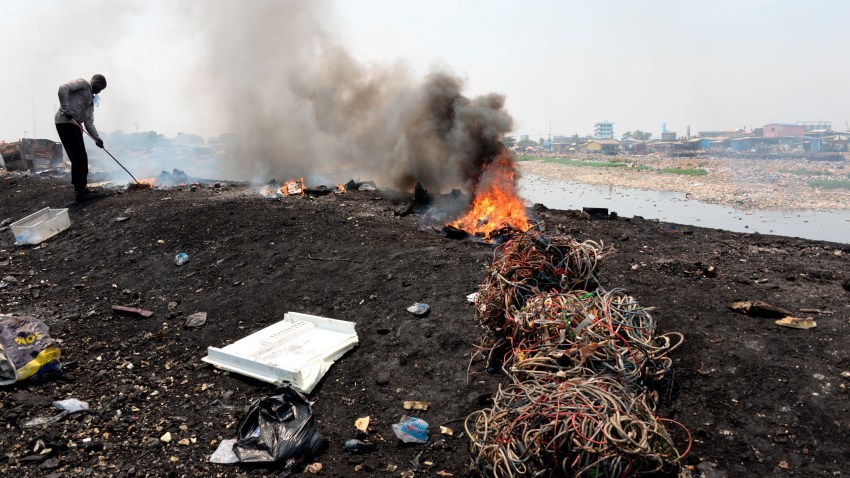In Agbogbloshie, a commercial district in Accra, Ghana, around 10,000 of the poorest people in the country sort through much of the world’s electronic waste. With no other way of making a living, they use crude methods to dismantle electronic devices—burning them or dousing them in acid—which expose them to toxic emissions and substances that often lead to acute and long-term health problems. In 2014, Agbogbloshie was deemed one of the 10 most polluted places on Earth, with lead, mercury, arsenic and cadmium found in the air, water and soil at concentrations 100 times higher than safe levels.
Agbogbloshie has a reputation as an e-waste hellhole, but there’s more to its story. In 2013, D.K. Osseo-Asare, an assistant professor of architecture and engineering design at Penn State, and his colleague Yasmine Abbas, a French architect and strategic designer, launched the Agbogbloshie Makerspace Platform, a project that aims to empower the district’s scrap workers and give a second life to e-waste. AMP provides workers with a customizable kiosk kitted out with tools and equipment they can use to dismantle, create or refurbish devices. A digital platform then connects scrap dealers to buyers, makers to materials and blueprints, and people with broken items to workers who can fix them. The project, whose network included more than 750 workers by 2018, is now looking to expand to other locations, and the Ghanaian government is also developing its own e-waste “upcycling” platform based on AMP, where discarded electronics can be made into something more valuable.
AMP is one solution to the expanding global e-waste problem, but many more solutions are needed. In 2019, the world set a record for e-waste, generating 53.6 million metric tons of it. Only 17.4 percent of discarded smartphones, computers, appliances and other devices were recycled. The rest were either sent to landfills, where they leaked toxic materials into the soil; incinerated, releasing heavy metals into the air, to the particular detriment of the marginalized communities that often live near the incinerators; or shipped to less developed countries, including Malaysia, the Philippines, Vietnam, India and Nigeria, where informal e-waste recycling goes on as it does in Agbogbloshie.

